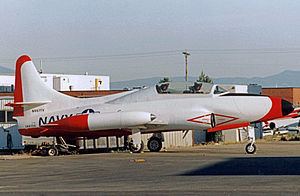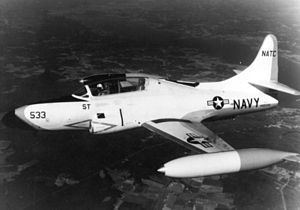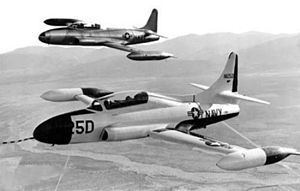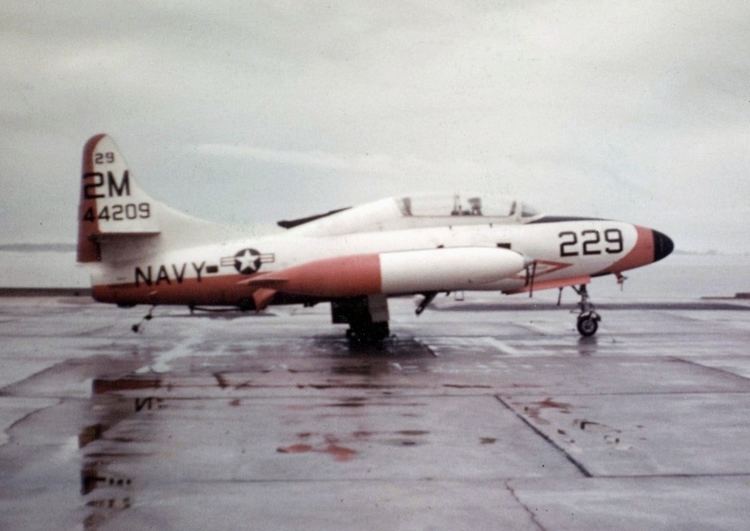Top speed 933 km/h Wingspan 13 m Weight 5,427 kg First flight December 15, 1953 | Range 1,560 km Length 12 m | |
 | ||
The Lockheed T2V SeaStar, later called the T-1 SeaStar, was a turbojet trainer aircraft for the U.S. Navy that entered service in May 1957. It was developed from the Lockheed T-33 and powered by one Allison J33 engine.
Contents

Design and development

Starting in 1949, the U.S. Navy used the Lockheed T-33 for land-based jet aircraft training. The T-33 was a derivative of the Lockheed P-80 fighter and was first named TO-2, then TV-2 in Navy service. However, the TV-2 was not suitable for operation from aircraft carriers. The persisting need for a carrier-compatible trainer led to a further, more advanced design development of the P-80/T-33 family, which came into being with the Lockheed designation L-245 and US Navy designation T2V. Lockheed's demonstrator L-245 first flew on 16 December 1953 and production deliveries to the US Navy began in 1956.

Compared to the TV-2, the T2V was almost totally re-engineered for carrier landings and at-sea operations with a redesigned tail, naval standard avionics, a strengthened undercarriage (with catapult fittings) and lower fuselage (with a retractable arrestor hook), and power-operated leading-edge flaps (to increase lift at low speeds) to allow carrier launches and recoveries, and an elevated rear (instructor's) seat for improved instructor vision, among other changes. Unlike other P-80 derivatives, the T2V could withstand the shock of landing on a pitching carrier deck and had a much higher ability to withstand sea water-related aircraft wear from higher humidity and salt exposure.
Operational history

The only version of the T2V was initially designated T2V-1 when it entered service, but was redesignated T-1A SeaStar under the 1962 United States Tri-Service aircraft designation system, a name under which it would spend the majority of its career.
The T-1A was replaced by the T-2 Buckeye but remained in service into the 1970s.
Survivors

One T-1A is currently (2011) airworthy, based at Phoenix-Mesa Gateway Airport (former Williams Air Force Base) in Mesa, Arizona, and being flown for experimental and display purposes. Two examples are preserved on public display in Tucson, Arizona.
Operators
Specifications (T2V-1)
Data from Lockheed Aircraft since 1913
General characteristics

Performance
